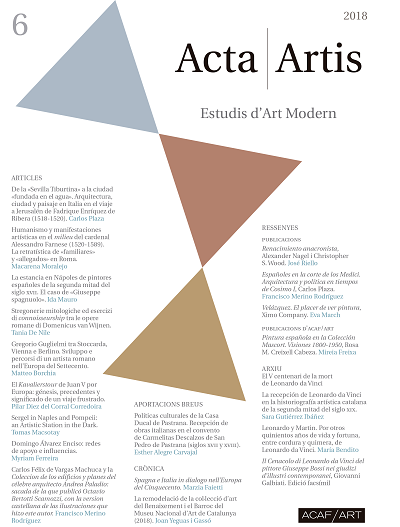Sergel in Naples and Pompeii: an Artistic Station in the Dark
DOI:
https://doi.org/10.1344/actaartis.6.2018.27493Resum
This contribution considers eighteenth-century visits to the antiquarian collections in Naples in the context of recent accounts of neoclassical art, and in particular Andrei Pop’s reading of it through his introduction of the notion of “Neopaganism”. The article argues that visits to Portici and the excavations at Herculaneum and Pompeii have been improperly amalgamated with the Roman study journey undertaken by artists and tourists. Noting the novelty and excitement of the archeological findings, but also the tight control on visitors and strict prohibition of any form of copy that signifi ed the “extraction” of images of the Neapolitan treasures, the article argues that artists’ visits to collections of antiquities must be treated as an anomaly in the study regime. The contribution draws from several records of visits, highlighting a small artists’ excursion that included the Swedish sculptor Johan Tobias Sergel. In such records, but also in Sergel’s sculpture, it finds evidence for the idea that Naples can be framed in terms of the budding fascination with a violent antiquity and with “natural” drives accompanying the rise of “Neopaganism” in the late 1760s. The intimate nature of some of the objects recovered, along with the dramatic relationship to the drama of sudden death and the sense of history having been “cancelled out” for the buried towns, made it difficult to sustain traditional attitudes of “admiration” for antique models
Descàrregues
Número
Secció
Llicència
L'autor/a que publica en aquesta revista està d'acord amb els termes següents:- L'autor/a conserva els drets d’autoria i atorga a la revista el dret de primera publicació de l’obra.
- Els textos es difondran amb la llicència de Reconeixement de Creative Commons, la qual permet compartir l’obra amb tercers, sempre que en reconeguin l’autoria, la publicació inicial en aquesta revista i les condicions de la llicència.


